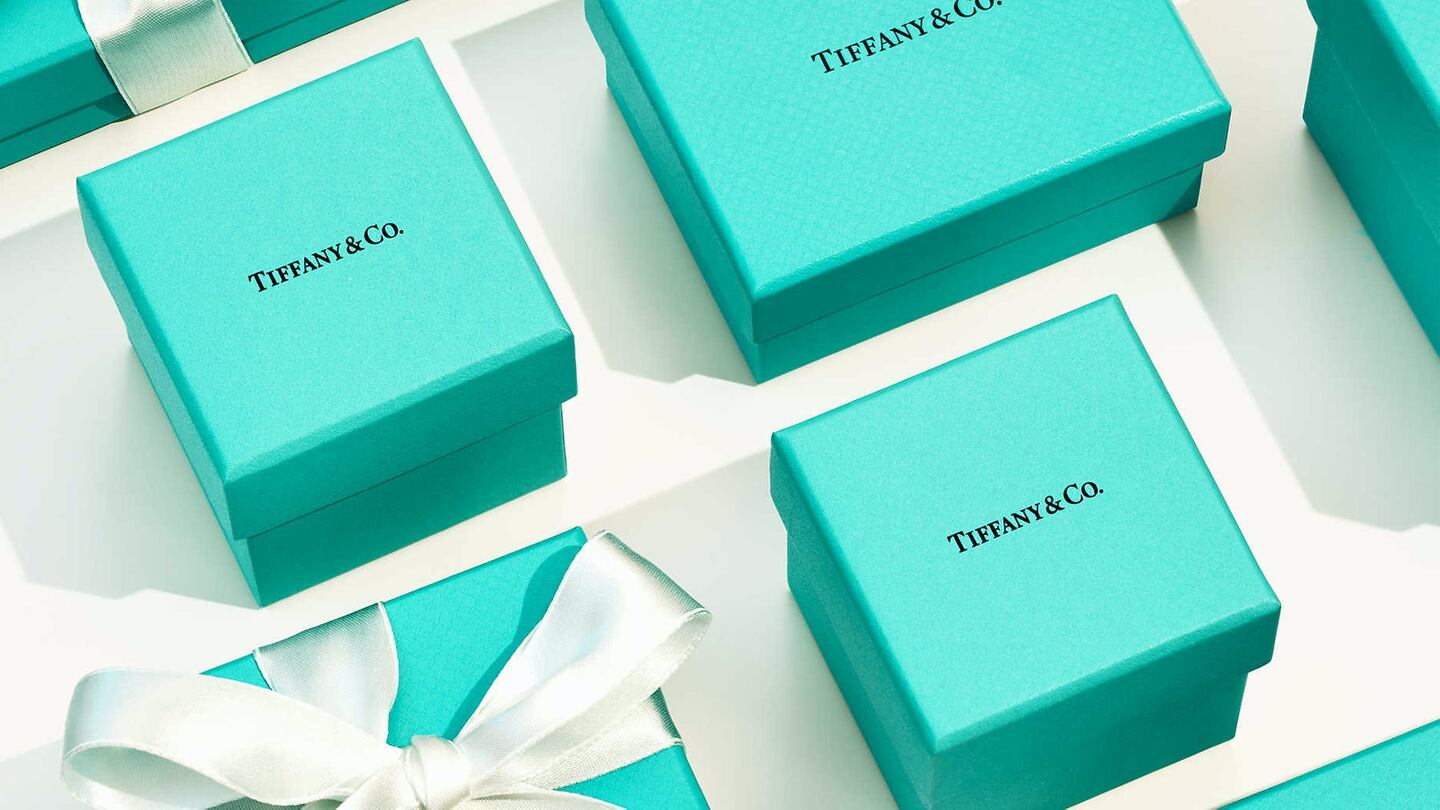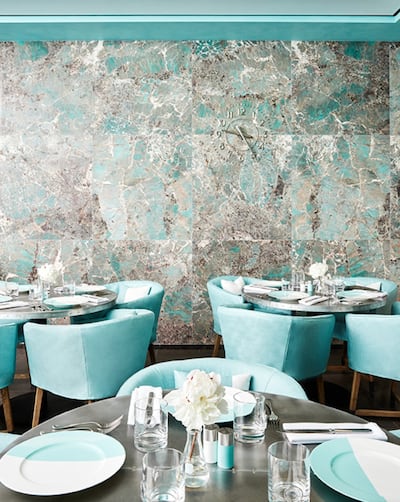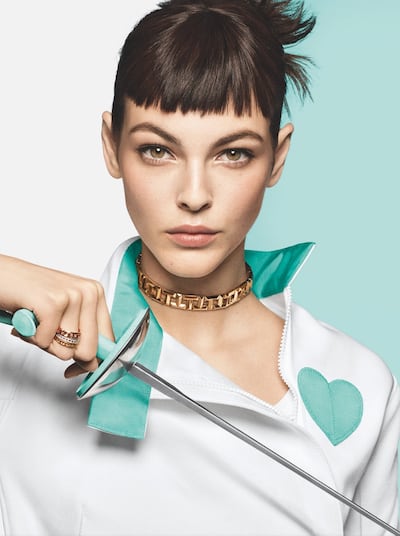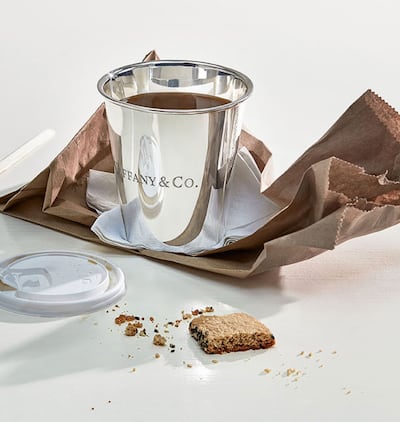
The Business of Fashion
Agenda-setting intelligence, analysis and advice for the global fashion community.

Agenda-setting intelligence, analysis and advice for the global fashion community.

PARIS, France — LVMH has big ambitions for Tiffany & Co.
Last November, the French luxury conglomerate snapped up one of hard luxury's last available targets in a megadeal worth $16.2 billion. Now, it's betting it can double Tiffany's revenue and increase operating profit fivefold within the next decade.
With the transaction expected to be completed by mid-year, speculation on what a Tiffany-LVMH integration might look like is mounting.
LVMH, whose market capitalisation is more than €220 billion, has built its business at acquiring fusty brands and turning them into glimmering successes, from fashion houses Celine and Loewe to luggage brand Rimowa. In hard luxury specifically, it has transformed Bulgari, which it acquired for $5.2 billion in 2011.
ADVERTISEMENT
But what makes the Tiffany deal so attractive for LVMH is that its transformation is already underway. The arrival of Chief Executive Alessandro Bogliolo in October 2017 signalled the beginning of a turnaround for the storied jeweller, which had been struggling to effectively develop its brand, refresh its product offering and modernise its retail network, where poor merchandising and inconsistent in-store experience undermined its strong brand equity.
We expect to bring Tiffany time and capital, two things that are not that easy to get when you're quarterly reporting to the stock market.
By providing capital and taking away the pressure of meeting shareholder demands each quarter, LVMH hopes to accelerate Tiffany's turnaround strategy, Chief Financial Officer Jean Jacques Guiony told analysts on a conference call in November. LVMH will continue to focus on the six pillars Bogliolo laid out: amplifying brand message; refreshing product and in-store merchandising; delivering a smooth shopping experience across channels; strengthening Tiffany's position in leading markets; optimising its operating model; and aligning and fostering talent internally.
“What we’ll do is actually enable the strategy to be implemented,” Guiony said. “We expect to bring Tiffany time and capital, which are two things that are not that easy to get when you’re quarterly reporting to the stock market.”
So, what might Tiffany’s integration into LVMH fold look like? BoF breaks it down:
Elevating the Brand
While Tiffany has a strong brand that is recognised globally, it requires modernisation. In particular, Tiffany needs to make sure its ethos resonates with the next generation of luxury consumers.
Tiffany has already started to double down on the storytelling potential of its robin’s egg blue boxes, New York roots and cinematic associations in key markets like the US and China. Blue box cafés in Shanghai, Hong Kong, as well as New York and London, allow consumers to have “Breakfast at Tiffany’s,” a concept made famous by the 1958 novel by Truman Capote and the 1961 film starring Audrey Hepburn.

Inside the Blue Box Café | Source: Courtesy
ADVERTISEMENT
In Shanghai, the brand staged a large-scale exhibition, Vision & Virtuosity, attracting over 100,000 visitors during its 7-week run (double the brand's traffic target), garnering more than 500 million social media impressions and generating $50 million in PR value.
And, in November 2019, Tiffany named former Barneys CEO Daniella Vitale as its first chief brand officer. She will be responsible for Tiffany's global merchandising and marketing strategy.
But as LVMH’s Guiony pointed out during November’s analyst call, executing a long-term brand revival is hard to do when you’re a public company. “The only issue they have is that in commencing a long-term strategy of increasing the value of the brand, when you have to do quarterly reporting, it’s not that simple,” he said.
LVMH may play a role in helping to steer those marketing efforts. For instance, at German luggage company Rimowa, which it acquired for €640 million in 2016, collaborations with hot designers like Virgil Abloh have played a key role in boosting the brand's cool credentials. While Tiffany has not yet enlisted any hyped fashion names as guest designers, it has explored some unexpected collaborations, which hint at a similar play moving forward. Recent tie-ups include Dover Street Market — which sold exclusive pieces from Tiffany's newly launched men's collection — and modern florist Flowerbx, which sold Tiffany-branded bouquets in its New York store during the Valentine's Day season.
https://www.instagram.com/p/B8lPHkmJ5uS
A Retail Refresh
Tiffany has a vast global retail network of over 300 stores, but the in-store customer experience isn’t consistent. A retail refresh is underway, but the high levels of capital expenditure required to embark on a project like this have no doubt held Tiffany back. LVMH can supercharge this: it has the cash needed to invest in upgrading stores globally, as well as retail expertise and a vast network of its own that it can exploit.
Tiffany has already begun a transformation of its famous 5th Avenue flagship, set to be completed in 2021. Its first renovation in almost two decades will see retail space increasing dramatically (previously, customer space accounted for roughly one-third of the store). There will also be areas catering to VIP clientele and bigger groups. Then there's the blockbuster Blue Box café, which opened in 2017 and in the past has accrued wait lists of 4,500 on weekends.
ADVERTISEMENT
"This is a huge change because it means that for the first time since the 1940s, we will change the way customers use that space," Bogliolo told BoF last January.

Tiffany T campaign | Source: Courtesy of Tiffany & Co.
But while the company’s first push into more experiential retail has proven successful, many of its retail stores feel outdated and poorly merchandised. This is especially true in the US.
“The way Tiffany stores are set up is still quite old school in terms of layout and selling ceremony,” said Erwan Rambourg, managing director and global co-head of consumer and retail research at HSBC.
A priority for LVMH will be creating a uniform customer experience across Tiffany’s retail network. Similarly, strengthening Tiffany’s European retail business could also be a focus for the conglomerate, in a bid to better capture the dollars of the travelling Asian consumer. “For our brands, [Europe is] sometimes a very big share of the business we do and particularly with Asians,” said LVMH’s Guiony on the analyst call.
Tiffany would also benefit from an in-store merchandising refresh across markets. One option could be “to create a more accessible retail format in tier 2 and tier 3 locations (in shopping malls, for example), where entry products would only be served,” noted Bernstein analyst Luca Solca in a June 2019 report, pointing to the “silver only” corner in London’s Harrods, where high jewellery and entry-level silver styles are separated.
In June 2018, the jeweller opened a Millennial and Gen-Z-focused store in London's Covent Garden, a prime tourist destination with high foot traffic, close to where Dior and Chanel have opened permanent beauty boutiques. The location's stock is mostly entry-level-price jewellery, featuring a vending machine that dispenses the brand's $100 fragrances.
High-Low Recalibration
Tiffany's vast product range varies in make, material and price, starting at $150 for a sterling silver "Return to Tiffany" necklace, and reaching upward of $185,000 for a 2.6 carat diamond engagement ring. While the middle market is already a major revenue driver for the brand — gold jewellery sales are now double that of lower-priced silver — there's an opportunity to build out the segment of products priced between $2,000 and $10,000, a key bracket for boosting store productivity and operating margin, even further, according to June 2019 Bernstein analysis.
It is likely LVMH will build out the middle market with more branded collections. Increasing communication on the high quality of Tiffany’s diamonds would also be a smart move, according to Bernstein’s Solca: “Higher credibility in the high-end would also give Tiffany better balance, making it easier to sell its silver without brand equity damage.”
Calibrating high-end and entry-level offerings is something LVMH does well. Its brands Louis Vuitton and Dior do brisk business in small leather goods and cosmetics without damaging opportunity to sell five-figure clothing and accessories. “The question is not the price at which we sell items, but whether these items carry the value of the brand,” said LVMH’s Guiony.
The brand has also been working to better spotlight its high jewellery offering, which has led to double-digit growth in the category in 2018. In 2019, Lady Gaga wore a rare 128.54-carat Tiffany diamond to the Academy Awards — garnering substantial coverage in outlets from Harper's Bazaar to Vanity Fair — while Charlize Theron wore Tiffany high jewellery designs at the Oscars and the Golden Globes in 2020.
https://www.instagram.com/p/BuZZddplmw5
Creative Reboot
Tiffany began laying the groundwork for a creative refresh in 2017, when it installed former Coach creative director Reed Krakoff as chief artistic officer in 2017. (He had joined the luxury accessories as a "creative collaborator" the year previous).
The launch of Krakoff's "everyday objects" home and accessories collection in October 2017 ignited much-needed buzz around the Tiffany brand at the time, with items like its $95 china paper cups, $350 gold straw, $1,500 coffee can and $9,000 ball of yarn. The tongue-in-cheek line received a strong response from shoppers during the crucial holiday shopping period.
Its Tiffany T line is also a big commercial hit, becoming Tiffany’s largest jewellery collection. T was an archival design created by John Loring in the 1980s, revived by former design director Francesca Amfitheatrof in 2014. Krakoff described it as “a franchise that is fundamental and central to the Tiffany brand” at a press briefing earlier this month. Its most recent iteration, T1, designed by Krakoff, is a more focused collection consisting of about 15 styles. “[It’s] part of a new trend for Tiffany, introducing smaller, more iconic compact collections,” he said.

Tiffany Everyday Objects | Source: Courtesy of Tiffany & Co.
There is still much to be done with its high jewellery collections, where Bernstein analysis shows that Tiffany is lagging behind its European peers. According to the firm, design jewellery accounted for 36 percent of Tiffany’s offering in June 2019. By comparison, Van Cleef & Arples, Cartier and Bulgari’s design offering accounted for 58 percent, 71 percent and 92 percent respectively.
When LVMH acquired Bulgari for $5.2 billion in 2011, the conglomerate worked hard to focus product ranges and build out the house's high jewellery collections. Sales have since doubled and operating profit has increased five-fold, according to HSBC. If LVMH's approach to Tiffany is anything like its transformation of Bulgari, it is likely there will be more high jewellery collections to come.
“In order to recruit key Asian consumers, the brand needs more ‘iconic’ ranges: products that are instantly recognisable,” said HSBC’s Rambourg, pointing to Cartier’s Trinity, Juste un Clou and Love collections, and Bulgari’s BZero1 and Serpenti lines, as examples. “Leaving aside T by Tiffany and Return to Tiffany, the brand doesn’t have many ranges that are instantly recognisable.”
Under the LVMH umbrella, Tiffany may also explore diversification beyond hard luxury products with items like small leather goods and scarves. The brand currently offers leather goods, but the line is not a business driver. Given its significant luxury fashion portfolio, LVMH has the expertise to help Tiffany better develop this.
“It’s a little bit of longer shots...but it’s something that we would be foolish not to do,” said Guiony on an analyst call. “At Bulgari, we’ve been pretty successful in selling non-jewellery items, so why not?”
All Eyes on China
For LVMH, Tiffany's China reach is a huge draw. While the expansion opportunity for many luxury names in the region has diminished, Tiffany remains underexposed.
Over the past few years, the jeweller has worked hard to boost itself in the region, refreshing existing stores and expanding its network in Beijing, Shanghai and Hong Kong. It also launched e-commerce in China, debuted Blue Box Cafes in Hong Kong and Shanghai, and staged a large-scale brand exhibition at Shanghai’s Fosun Foundation.
The investment paid off: China has seen double-digit growth over the past three years, according to the company, with gold and diamond collections as best sellers. It is now Tiffany’s third-largest market. In mainland China, Tiffany is among the top preferred jewellery brands, second only to Cartier, according to HSBC's proprietary survey.
LVMH-Tiffany Supply Chain Integration
Owning a supply chain gives a luxury company a strong competitive advantage. Just look to Chanel and Hermès as examples.

Gal Gadot before the Oscars 2020 wearing Tiffany jewels | Source: Courtesy
Tiffany’s vertically integrated supply chain is a significant asset, delivering higher margins and faster product innovation. While the company does not own its own mines, it does buy rough diamonds directly to better assure quality and responsible sourcing. The company also cuts and polishes all diamonds in-house, employing over 5,000 skilled artisans.
“This is a key competitive advantage as no other brand does it,” said HSBC’s Rambourg.
It’s one that LVMH is likely to exploit, allowing it to capitalise on anticipated growth in the hard luxury sector. Currently, Bulgari buys its diamonds polished.
“We recognise the fact that Tiffany is a very big player in diamonds,” said Guiony on the analyst call. “It’s something where the sourcing is not that easy to do, and we expect to benefit from that.”
E-Commerce Opportunity
In addition to supply chain and diamond sourcing, Bulgari may also benefit from Tiffany’s digital expertise. The jeweller recently modernised its customer relationships management and inventory management systems across retail and e-commerce, and debuted a website design refresh in March 2019. Today, e-commerce accounts for 7 percent of Tiffany sales — not an insignificant portion considering that the category is a tougher digital sell.
“What they’ve done in e-commerce is impressive,” said LVMH’s Guiony. “We expect to learn from Tiffany on that for our other jewellery brand.”
Disclosure: LVMH is part of a group of investors who, together, hold a minority interest in The Business of Fashion. All investors have signed shareholder’s documentation guaranteeing BoF’s complete editorial independence.
Related Articles:
[ Tiffany CEO: ‘Love Is Still a Hot Business’Opens in new window ]
[ What LVMH Stands to Gain From Buying TiffanyOpens in new window ]
The deal is expected to help tip the company into profit for the first time and has got some speculating whether Beckham may one day eclipse her husband in money-making potential.
The designer has always been an arch perfectionist, a quality that has been central to his success but which clashes with the demands on creative directors today, writes Imran Amed.
This week, Prada and Miu Miu reported strong sales as LVMH slowed and Kering retreated sharply. In fashion’s so-called “quiet luxury” moment, consumers may care less about whether products have logos and more about what those logos stand for.
The luxury goods maker is seeking pricing harmonisation across the globe, and adjusts prices in different markets to ensure that the company is”fair to all [its] clients everywhere,” CEO Leena Nair said.